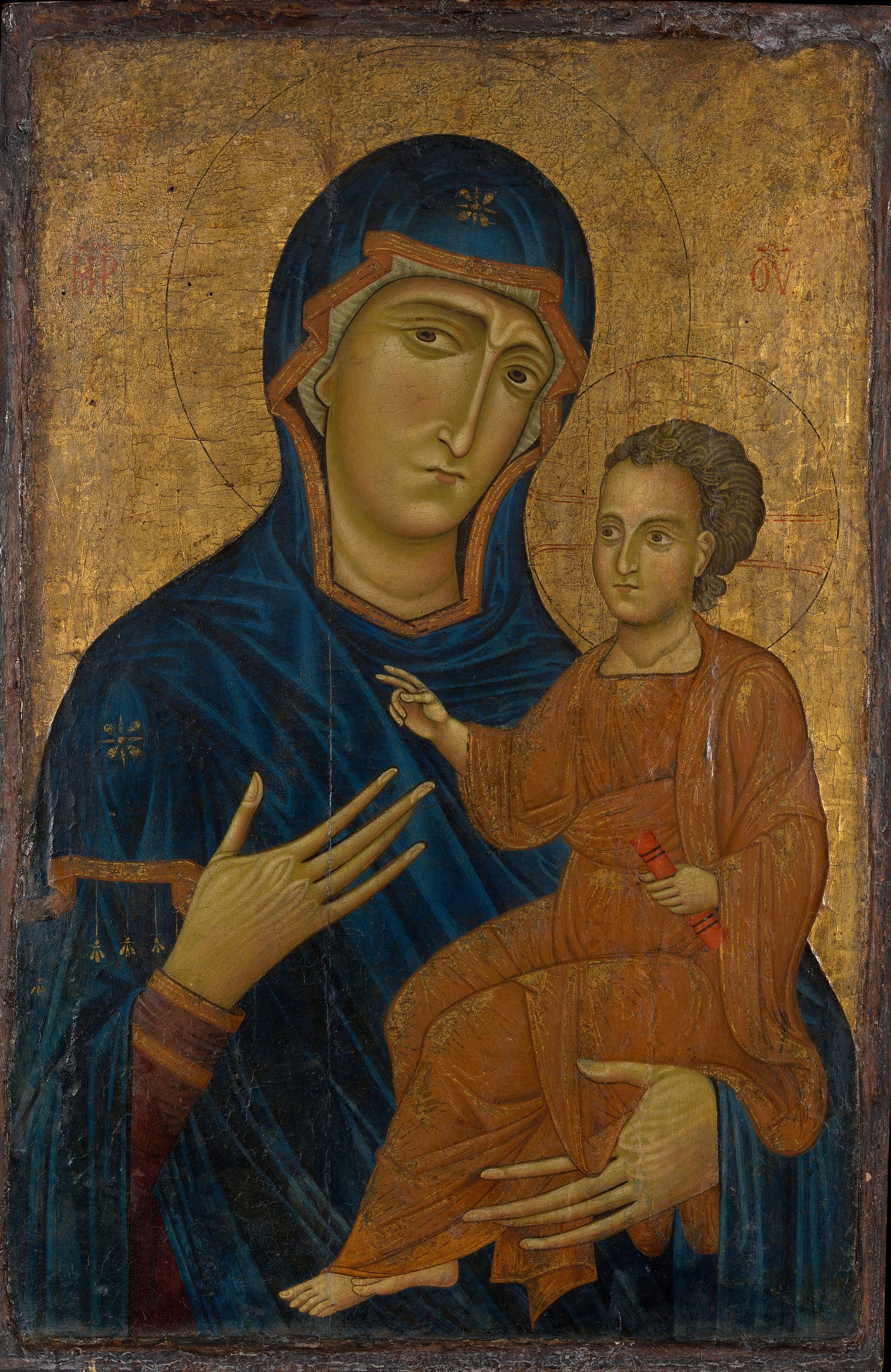~ What is a Painting? Each Painting is its own answer to this question. Any preconceived notion of what a painting is or ought to be stops us from Seeing the Painting before our eyes. To See a Painting is to let it tell us what it is rather than applying external concepts (personal, historical, evaluative) to it. The concepts that reveal a Painting’s intelligibility are those that are immanent to it, asked for by the work itself. We all too often see a painting without Seeing the Painting. ~
According to Berlinghiero’s Madonna and Child, a Painting is a mediator between a material-bound Here and an abstract Beyond. This Painting of the human God-mother Mary and the embodied God-son Christ creates a spectrum of material embodiment, a chain through which a viewer, as an embodied soul can approach the Divine. This chain progresses from the depiction of flesh modeled from light and dark to the abstract light and line that points to abstract truth beyond the limitations of the senses. The painting leads a viewer, whose extended body tethers them to the earth, through consecutive degrees of abstraction until they can take the final leap to the idea of the Holy: from Mary’s human-sized image with modeled folds of flesh and fabric that anticipate graphic lines; to Christ’s contour and the linear folds of his robe; to the reflective gold ground and the linear halos that float on it, which, as physical instances of God’s command “Let there be light!” when he divided the heavens from the earth with a line, are the most abstract (least material) pictorial means possible. From here, the viewer’s soul must take the final leap to the divine Beyond that the icon points to.




